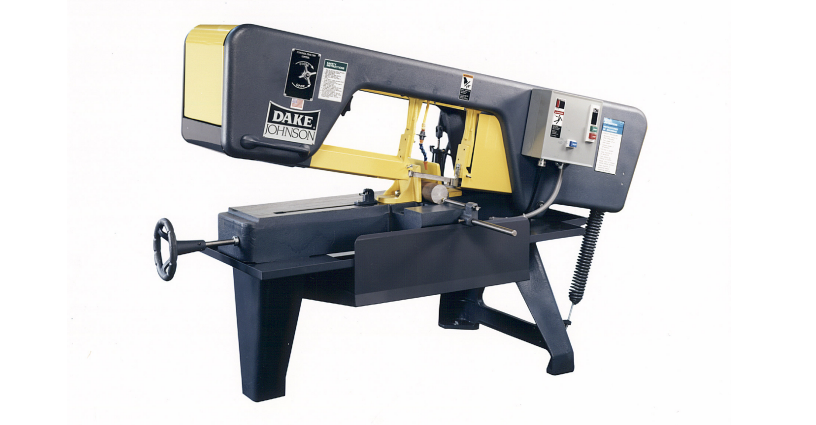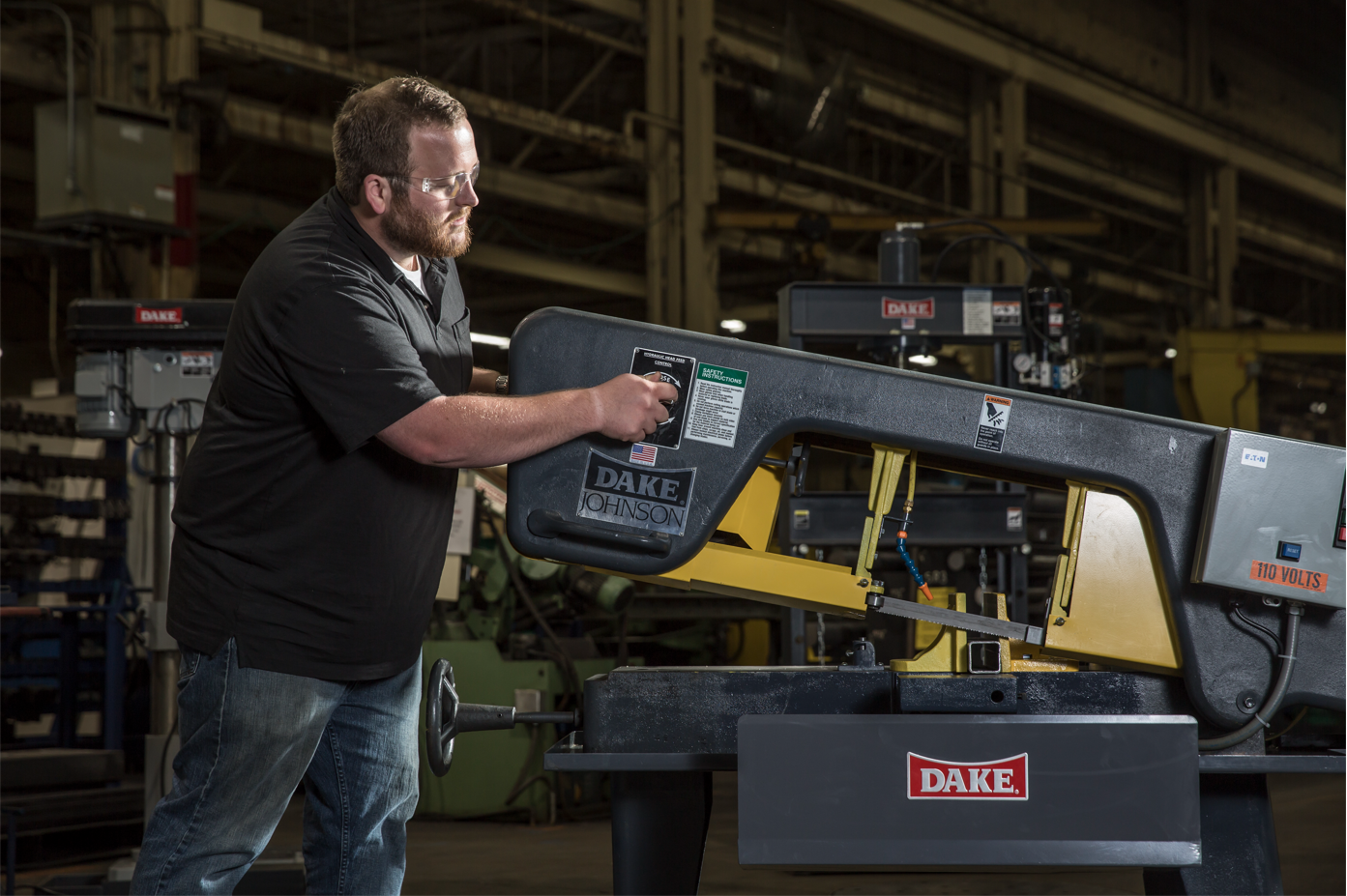Bandsaws have been around since 1809, and the designs have split into two branches over the years. Nowadays, we have vertical and horizontal bandsaws.
While both are capable of slicing through metal like a hot knife through butter, there are a few differences that you should note before buying one or the other. If you have been tossing around the idea of investing in a bandsaw, then we have a few tips to guide you along.
In this article, we will explore both types of bandsaws to help you make an educated decision to find the best fit for your metalworking shop.
Horizontal Bandsaw Overview
Horizontal bandsaws use long, toothed blades to slice through large pieces of metal. The kind of metal you can cut with a horizontal bandsaw depends on the type of blade you have on the machine. Take a look at our bandsaw blade guide to learn more about blade options.
Once you have chosen the metal material you want to cut, the piece must be held in place by a vise while the bandsaw blade moves in a horizontal motion and makes downed cuts.
Vertical Bandsaw Overview
Similarly, vertical bandsaws can also be equipped with various blades to cut a variety of metals. The metal is held on the table by a vise while the blade column is pushed towards the metalworker until the cut is completed. This is more of a "hands-on" operation.
Differences Between Vertical and Horizontal Bandsaws
Besides the direction of the bandsaw blades, the differences in vertical and horizontal bandsaws are mostly seen in the work. It is far more common to use horizontal bandsaws in industrial workshops and large-scale manufacturing companies. Meanwhile, vertical bandsaws are best when put to use in small to medium size metalworking shops.
Another difference is in the cuts. Horizontal bandsaws have a higher cutting rate, and they provide optimal squareness when needed. They also tend to have a longer lifespan for the blades, and they can cut bigger pieces of metal. On the other hand, the vertical bandsaw is often used for cutting angles and mitering. These can also be used to cut structural parts, fixtures, and intricate pieces of metalwork. Vertical bandsaws are also much more flexible than the horizontal models, and they can easily cut curvy shapes.
The last major difference is in the types of metal that you will be able to cut. While it is true that this greatly depends on the type of blade you choose, it can also depend a bit on the machine. Horizontal bandsaws are better for slicing through harder metals like stainless steel, and vertical bandsaws are ideal for softer metals like structural steel.
The key here is to figure out which types of cuts you are looking to make most frequently. If you have clients who want square pieces and a high turn-over rate, your best bet will be with a horizontal bandsaw. If you need to produce metal pieces that have angles, then you may want to consider the vertical bandsaw.
Which Bandsaw Machine Do You Prefer?
While all of our machines here at Dake are designed to be as safe as possible, there is a bit more of a risk when using a vertical bandsaw as opposed to a horizontal bandsaw.
The horizontal bandsaw can be set up to perform cutting tasks automatically. This allows the operator to step away from the machine and do something else. Meanwhile, the vertical bandsaw requires the operator to feed the material to the machine. Because of this, there is a slightly higher risk of injury with the vertical bandsaw.
Which Bandsaw Is More Cost-Efficient?
Vertical bandsaws tend to cost a lot less than horizontal bandsaws. This is partially due to the fact that they are a lot smaller than horizontal models. Generally, we recommend vertical bandsaws for smaller workshops because of the size and price differences. They don’t take up as much space as horizontal bandsaws, so you will have more room to bring in other machines.
Are There Small Horizontal Bandsaws?
We've recently added two new Benchtop Horizontal Bandsaws to our product lineup. These portable machines are much smaller than the average horizontal model, and they can be taken to job sites to perform tasks such as cutting metal tubes, flats, and rounds.
These machines even have miter capabilities from 0°- 45°. If you would like to learn more about this model, click here to read our in-depth blog article. We recommend that you also purchase the compatible Benchtop Bandsaw Portable Work Stand if you buy either of the Benchtop Horizontal Bandsaw models. This fold-flat portable table is made out of lightweight steel tubing, and it can hold up to 110 lbs.
Vertical Bandsaws
We currently offer four different types of vertical bandsaws here at Dake. These are the 14-10 Series, the Work-A-Matic, the Trademaster, and the Industrial Vertical Bandsaws. The smallest and lightest model is the 14-10 Series.
It is our personal favorite for small metalworking shops and hobbyists. If you would like to learn more about any of our vertical bandsaw machines, you can check out our handy guide to vertical bandsaws.
Horizontal Bandsaws
Besides the aforementioned Benchtop Horizontal Bandsaws, we offer three other types of horizontal models here at Dake. These are Standard Duty, Heavy Duty, and Mitering Horizontal Bandsaws. These are powerful machines that can perform wet or dry cuts with ease.
If you have a smaller shop, we recommend one of our two Standard Duty models. For larger shops, the Heavy Duty machines are best. If you would like to learn more about our horizontal bandsaws, check out this useful article on our blog.
Get in Touch
Are you looking for the right metalworking machine for your shop? We offer customization here at Dake. Since we manufacture our machines, we have the freedom to make changes. If you would like to speak with one of our experts about a custom metalworking machine, get in touch with us today.
-1.jpg?width=1200&height=525&name=DAKE003_%20Logos_Red%20(002)-1.jpg)


